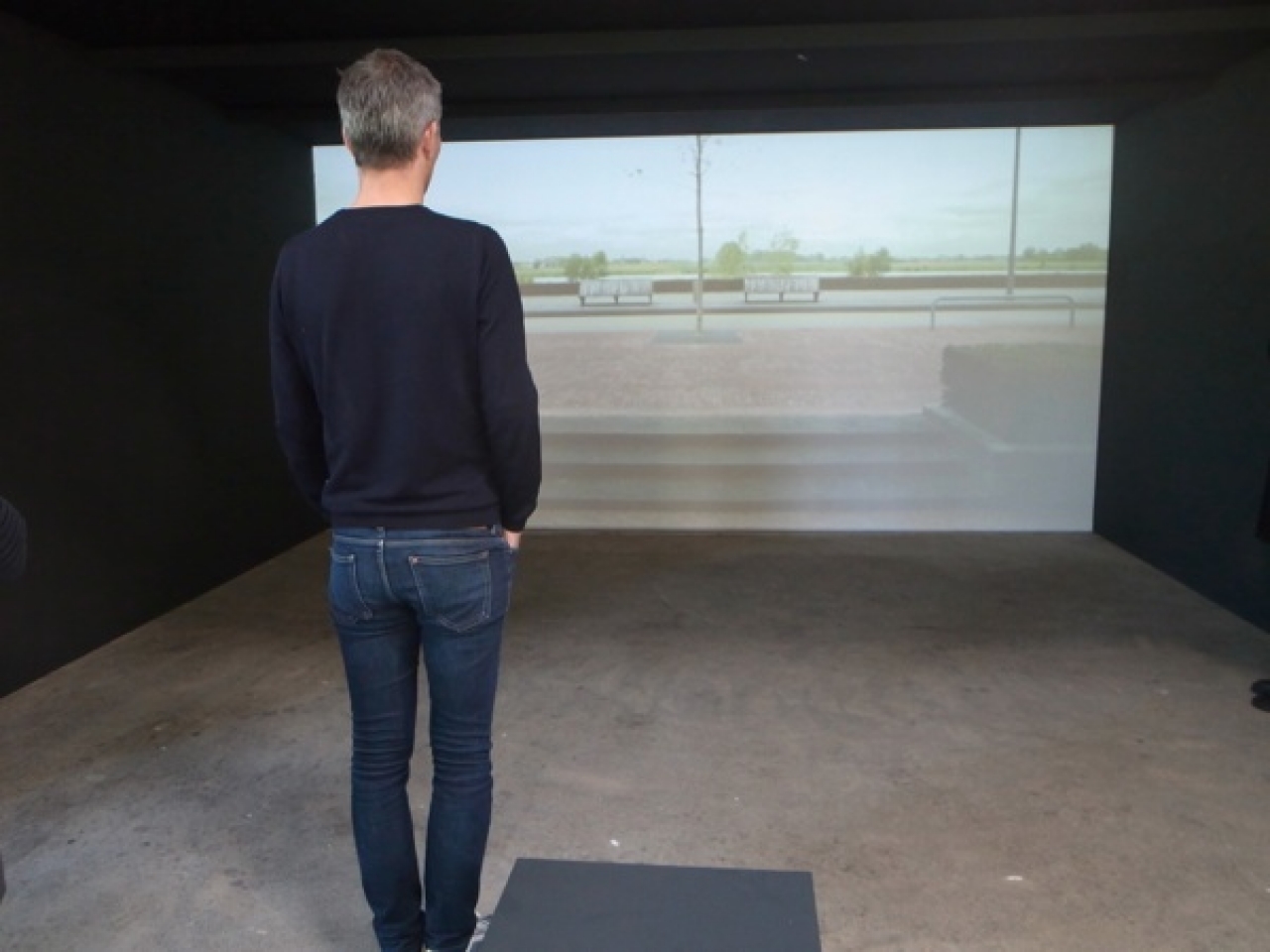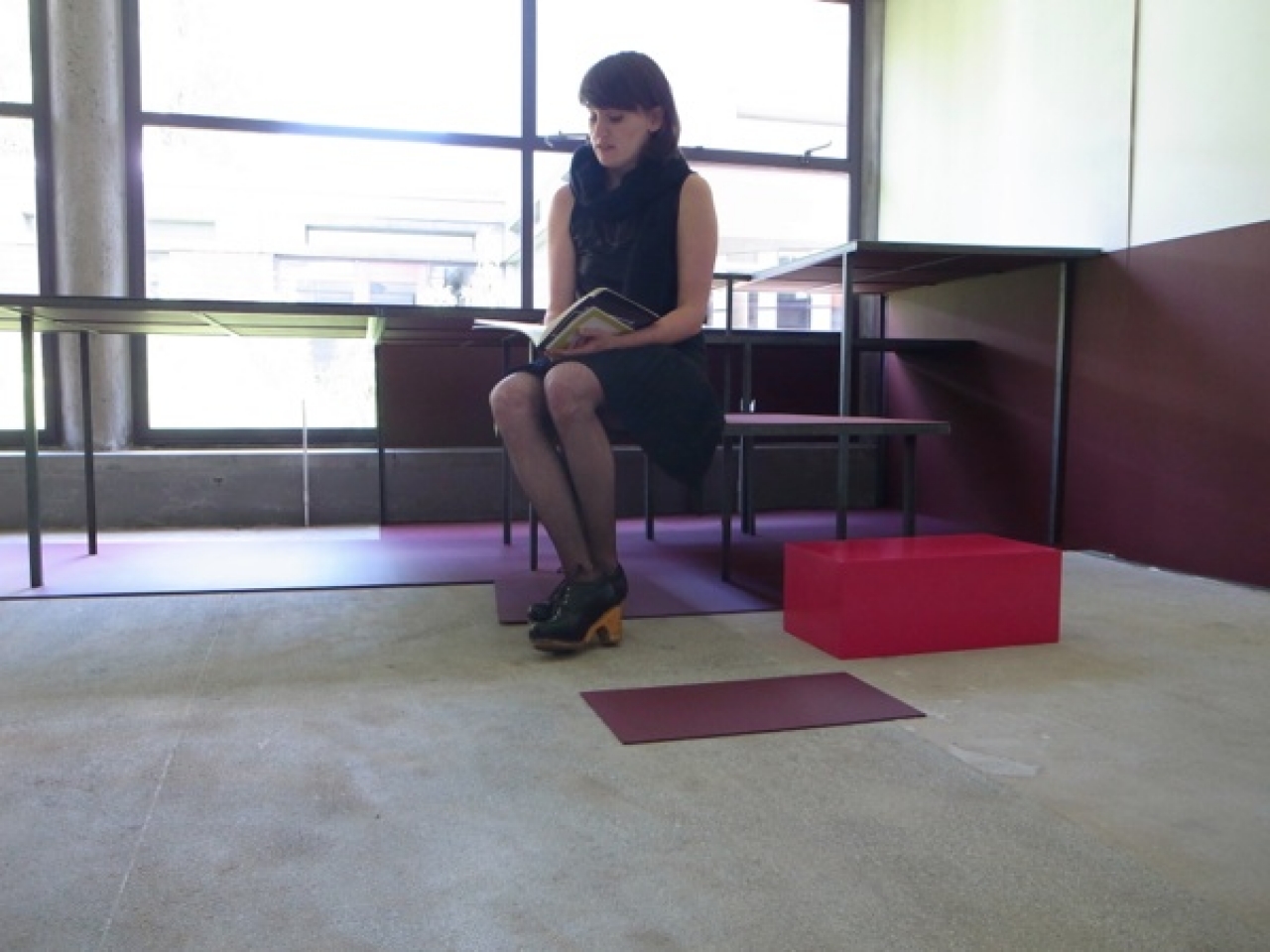Something More Permanent Than Snow
Something more permanent than snow.
Here is a gap in the houses that is not a gap.
Here is the ‘Play Element of Culture’.
Here was a Space that is now a Place.
Aldo van Eyck
The house that we live in seems almost a statistical constant. The same picture on the wall for years, the same wallpaper. Some walls are replaced or added yet fail to surprise, and the indefinable spaces that result from them are the first to be done away with. The house needs be ever more spacious, more rational; rarely is something added that is out of sync with the rest. Living here would gain much if only the house would awaken from its slumber. The scullery or back-kitchen. This part will eventually be joined to the kitchen to optimise space and efficiency, but it has not happened yet. A scullery is a room that hovers between the categories of kitchen and shed; it is a space behind the kitchen that grants access to the garden. It is adjacent to the proper kitchen and is used for residual actions, such as putting down your dirty boots, hanging your coat, washing and ironing, storing mason jars, vegetables and lettuce. Sometimes tools are kept there. I also know of a woman who moved her bed to the scullery and started to live in it just in order to have a room for herself. Why not. Writers usually associate the attic to the mind, to reason, whereas the basement evokes the subconscious, the dark entity of the house. The scullery, by contrast, is an unfamiliar appendix, the nexus between inside and outside, between heart and brain. Friends come in through the back door and enter the house from the scullery, in that extra, mock entry.
Artists like the irrational. For houses in the city centre, Joep Van Lieshout invented a grotesquely shaped bubble that can be hooked onto a building, thereby creating a free space, a peculiarly intriguing pustule protruding from the wall. You can merely sit inside them with a book, or idle with eyes closed.
I am also reminded of a residence in Kralingen by architecture firm Ooze, which envelops the traditional pitched roof like a three-dimensional puzzle. The visual dissonance of the annex started with the simple desire for a bigger kitchen, which eventually grew into an all-encapsulating ‘hat’ around the whole edifice. Sometimes it pays off to interpret a task as a much grander enterprise than what was handed to you.
This flexibility, I find, entails that logic does not always call the shots.Russian artist Ilya Kabakov created an installation called ‘The man who flew into space from his apartment’. To escape the narrow-mindedness and rigid control of the Soviet regime, this man used fireworks to blow a hole in the roof, under which he placed a large catapult-like trampoline to hurl himself outside. Museum visitors are not allowed to enter, and can only peek into the space through cracks in the wall. ‘He always, as far as he remembered, felt that he was not quite an inhabitant of this earth, and constantly felt the desire to leave it to escape beyond its boundaries.’
Alicja Nowicz from Poland makes her films and installations with one of those cramped, stuffy communist apartments in mind. She then blows apart this backdrop of stultifying normality in a playful way. Not only does she manipulate the proportion between the apartment and its inhabitants, but she also adds startling elements like a girl who rolls from a hill, a big head that peers into a small window or a priest who suddenly comes in.
Luuc Sonke, by contrast, belongs to the type of architect who accepts a commission in order to turn it upside down completely, pleasantly deranging the logic of the building. He likes to make things himself, since handmade objects defy the uniform straightjacket of our society. Individualism is the capital of art, the antidote against consumerism. Additionally, Sonke’s furniture is of great beauty. And although his main interest lies in the reclaiming of public spaces as political or social spaces, here he conveys his ideas in the form of a modest interior.
Eva Schalkwijk remarked how our Dutch outside spaces look as if everything is controlled by some unknown entity. Unspoken rules lead to recognizable design and behaviour. ‘Sometimes it seems a bit too composed, like the whole reality is scripted. Did you see that? What? The way they walk through this building. That is how people normally walk.’ Intrigued, she watches the security camera footage from Lisse on her computer, to then invent her own take on it. She has directed a choreographic scene in which familiar actions, such as tying our shoelaces, roll rhythmically through the image.
Everything should be kept in motion; that is what matters. Sometimes, this movement comes from the outside, like an overwhelming natural force.
The Fukushima catastrophe has become a part of Juri Suzuki’s life. ‘I would have never thought this was what my hometown would become famous for. I realize that since the disaster there has been a feeling of instability and precariousness regarding everyday life – suddenly something might happen which could completely change our life. I have many different perspectives on the same catastrophe simultaneously.’
This affects my position in the Netherlands. I’m searching how I can be in different places at the same time as a Japanese woman who lives in the Netherlands. It is an impossible question. But maybe it can be solved metaphorically? My question is also about how the spectator could have body or mental awareness and can fly into space, or into himself.’
Johanna Nocke also attempts to escape ‘Ikea living’; she created an installation work that is customised for her: a construction that can function as a versatile piece of ‘life-furniture’ for her and her boyfriend, who differ in height considerably. ‘My point of view is not that of an architect looking at an element of architecture, but that of an individual interested in the impact architectonic surfaces have on the experience of our environment.’ She transforms the space by adding colour: ‘A luscious blue tinted warm raspberry red or a coldish but very placid / cosy greyish blue.’
The work is meant to be a proposal: she has made the construction for her own situation but could design and realize another piece of furniture on demand, and specific for that situation.
Niccolo loves irrationality. He has come up with a story about a group of employees who after being dismissed shut themselves inside a supermarket by way of protest. The artist isolates two types of spaces that we deal with on a daily basis in a film set-like installation. In this way, he achieves a new environment with a strong narrative charge, combined with the aesthetics of Mad Man. In the end, skaters will do a performance and we will see what is left behind.
For this graduation show, we are guests at the Municipal Orphanage designed by Aldo van Eyck in Amsterdam in 1960. Van Eyck loved SLOAPs (Spaces Left Over After Planning), as well as a ‘Play, Work, Live’ approach to community. He thought of these things as ‘Inbetweening’, i.e. rendering overlooked spaces visible. Giving waste a purpose.
Everything is in motion, not just in the Municipal Orphanage which has not been used for years and is starting to decay, but also Van Eycks ideas can now only be found as theories in books.
Rachel Himmelfarb, however, contributes to his legacy. She presents an installation of large scale drawings of Aldo Van Eyck’s Orphanage. Her drawings could be seen of as a visual study of one of the most iconic examples of structuralist architecture. She wants to approach the orphanage from an architectural point of view in which she goes back to the original design of the building as a way to represent its potentials at the moment when the orphanage was still open and innocent.
The Studio for Immediate Spaces is the dynamic study program in which students with different backgrounds meet. There is no other inquiry than that into the immediate, the urgent and the momentous, into the flexibility of ideas and matter. The students invent playful solutions, add a touch of the irrational in their thoughts and sometimes appeal to the imagination for escape, as did Kabakov. Those things are the scullery of living, where the students put down their boots and make something more permanent than snow.








